Before jumping into the trenches with two researchers, I would like to thank John F. Roy for taking the time and interest to produce his car research in ERB-APA #14 and #15. If I can keep him interested long enough, plus get Alan Hanson involved, we could produce one heck of a chronology by the time this thing is over.
 |
| ERB-APA #15 |
Because of John's unexpected special interest, I am going to break my "Apes And Cars" silence and comment on some of his research. At this time I am going to discuss only John's statements, so as not to take away from my future Tarzine article. By the way, this is much the same discussion John and I had in Maryland at ECOF 1987.
JFR / ERB-APA #14
JMM / ERB-APA #17
JFR / ERB-APA #14
JMM / ERB-APA #17
JFR / ERB-APA #14
JFR / ERB-APA #14
JMM / ERB-APA #17
JFR / ERB-APA #15
JMM / ERB-APA #17
JFR / ERB-APA #15
JMM / ERB-APA #17
JFR / ERB-APA #15
JMM / ERB-APA #17
Mike Moody, in Part Four of his "How Old Is Tarzan?" says his research shows automobiles were a possibility in 1893. No one denies this, but were there automobiles such as those described by ERB in existence then?
 |
| 1893 Duryea |
JMM / ERB-APA #17
The most important thing to remember here is,
- "who is doing the describing"? You have the actual events as they occur in 1893.
- Then you have a second-generation story related to Edgar Rice Burroughs, the narrator, in England in 1910.
- Then you have a third-generation story in which Edgar Rice Burroughs, the narrator, related to Edgar Rice Burroughs, the author, in Chicago before December 11, 1911.
- Then you have a fourth-generation story when Edgar Rice Burroughs, the author's, manuscript is edited by Thomas Metcalf and presented to us in the October 1912 issue of All-Story Magazine.
- My research indicates that the car descriptions are provided by Edgar Rice Burroughs, the author from Chicago. Not Tarzan. Nor, Edgar Rice Burroughs, the narrator from Virginia. The author from Chicago was a huge car lover.
 |
| The All-Story Magazine |
As I have pointed out many times. It was the regular habit of Edgar Rice Burroughs, the author from Chicago, to insert his true life experiences into the Greystoke chronicles. The chronicles in turn were provided by Edgar Rice Burroughs, the narrator from Virginia. You yourself pointed out a good example of Edgar Rice Burroughs, the author, inserting his true life experiences in John Carter's chronicles in ERB-DOM #13.
On page 98 of The Gods Of Mars, John Carter was pretending to be unable to control Fal Siva's space ship so he kept thinking of football games, a 5-ring circus, and the Congress of Beauties at the Chicago World's Fair of 1893. Upon examination of the facts, we can show this is not really John Carter's description.
As all sports fans know American football was developed from rugby, a game played in England. Princeton and Rutgers played the first game between colleges at New Brunswick, NJ on November 6, 1869. Therefore, the only time John Carter could have seen football games was between 1876 and 1886 when he returned to Earth from Barsoom and resided at his home on the Hudson. Although possible, it is very unlikely. Edgar Rice Burroughs, the narrator's, descriptions tend to show that John Carter remained in recluse most of this time.
John Carter died for the second time, on Earth, on March 4, 1886, and returned to Barsoom. It was twelve years later, in 1898, when he visited Earth again. Therefore, he could not have been at the Chicago World's Fair in 1893.
Now John in your own words. "I think Burroughs slipped here and possibly was drawn on some of his own memories of the 1890s." I could not agree with you more. In September of 1893 Edgar Rice Burroughs, the author, began his lifelong fascination with the automobile when he became involved in the exhibition staged by his father's American Battery Company at the World's Columbian Exposition in Chicago. It was the 18-year-olds job to drive an electric automobile around the World's Fair to demonstrate the company's storage batteries.
 |
| William Morrison Electric Carriage |
Shortly afterward in the same year Edgar Rice Burroughs, the author, was back at Michigan Military Academy and playing football. He mainly played quarterback but he also lined up at left halfback and right end. The future novelist must have been pretty good because he made the Champion Prep School Team of the West in 1894.
I think circumstantial evidence clearly shows that it was Edgar Rice Burroughs, the author from Chicago, who slipped when The Gods Of Mars statement was written, and not John Carter. Now let's go back to Tarzan Of The Apes.
As I have mentioned many times before, the only way the Edgar Rice Burroughs, publishing team, was allowed to continue to write the Greystoke Chronicles was that Edgar Rice Burroughs, the author from Chicago, took pains to protect the English families' privacy. To do this Edgar Rice Burroughs, the author, did not use Tarzan's family's real names, nor did he use the true dates. The ship name, Fuwalda, and the prompt English family name would have been easily traced, and the Greystokes revealed. My research has indicated that Edgar Rice Burroughs, the author, has moved the events of 1872 forward sixteen years to 1888 in the telling, and adding modernizations.
Therefore, when Edgar Rice Burroughs, the author, changed the dates he had to alter some descriptions to go along with the modernized time change. That is why automobiles are described the way they were, skyscrapers are mentioned in New York City, and modern words like limousine are used.
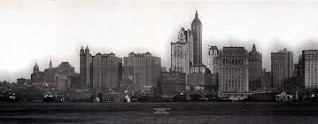 |
| 1890 New York City |
As you will notice, all these little changes are background descriptions. They play no real part in the story outside of giving descriptions of time. If you changed those descriptions to sixteen years earlier you are going to have the same exact story as told by Edgar Rice Burroughs, the author. Yet, if one accepts the 1888 birth date of Tarzan, which is printed in Tarzan Of The Apes, one can not accept the lunar eclipse in Jungle Tales of Tarzan, or all the events in The Son Of Tarzan.
 |
| Frank Frazetta |
JFR / ERB-APA #14
"The American Automobile", by Ralph Stein, states "Frank Duryea is traditionally acknowledged to be the first man to drive an American car in an American town - 1893, in Springfield, Mass." The illustration shows a buggy-like car with a tiller. As Stein points out, "It was the appalling condition of American roads - or to be more exact, the lack of roads - that dictated the design of the early American car." It was 1902 when R.E. Olds of Lansing, Mich. became the first mass producer of motorcars. These had bicycle-like wheels, and a tiller and could reach a top speed of 20mph. If one could afford it he could purchase a four-cylinder European car, but they were neither suited to the horrors of American road conditions nor the crude ministrations of blacksmith mechanics.
 |
| Frank Duryea |
JMM / ERB-APA #17
At this point, John's research and mine are already starting to follow different trails. "The World Book Encyclopedia," says that in 1805, Oliver Evans demonstrated the first American motor vehicle in Philadelphia, Pennsylvania. In the following years, other American inventors developed steam carriages but they soon lost out to the electric cars. Thomas Davenport of the U.S. built a working model of an electric-powered vehicle in 1836. Other inventors improved electric cars and by 1900, they became the most widely used type of the automobile.
 |
| 1898 De Dion Tricycle (1st mass-produced mc 1896-1901 in France) |
The book "History Of Cars, The Encyclopedia Of The Motorcar," Crown Publishers Inc., 1979, says that in August 1888, William Steinway, owner of the Steinway & Sons piano factory in New York, talked to Gottlieb Daimler, who patented the first light internal combustion engine in 1883, about U.S. manufacturing rights and signed a contract on September 9, 1888. The Daimler Motor Company was founded in Steinway Avenue, Long Island, N.Y. Thus, before any U.S. makers had started up, in 1891 the Steinway company issued illustrated brochures on gas and petrol engines for tramway cars, carriages, quadricycles, fire engines, boats, and industrial purposes being offered by the parent Daimler-Motoren-Gesellschaft. The first engines were made under license in 1891 at Hartford, Connecticut.
 |
| 1886 Pioneer |
At the Columbia Exhibition in 1893 at Chicago, Illinois the company showed an electric lighting vehicle fitted with a ten-hp engine, three small two-hp cars, a two-point five-hp car, a six-hp fire pump, a motor boat with a 1ten-hp engine, and two and three-hp Daimler engines. In June 1893 William Steinway wrote to Daimler about the sensational success of these first vehicles in America, pressing him to visit Chicago to demonstrate his cars and explain their construction.
 |
| 1885 Gottlieb Daimler |
The first American car manufacturer was Duryea, although others may claim to have built a single vehicle earlier. In 1892 Frank Duryea began building an engine designed by the Pope Cycle Company, of Hartford, Connecticut. The motor was built to fit into an existing horse buggy. In the long haul, the experiment was a failure.
 |
| 1893 Charles & Frank Duryea |
Frank lost his backer, Erwin F. Markham, but made a second car on his own. The second vehicle first took to the streets on September 21, 1893, in Springfield, Massachusetts. In September 1895 he formed the Duryea Motor Wagon Company, which was also based in Springfield, Massachusetts. He adopted the Benz engine and formed a British company to sell cars in the U.K. Two of his cars ran in the London-Brighton Emancipation Run of 1896.
 |
| Gasoline-Powered Car 1893 |
Ransom Eli Olds claimed to have a car running in 1886, but not many people believe this. He came from near Cleveland, Ohio, and after his family moved to Lansing, Michigan he began building a copy of Otto's engine in a shed. Four years later, in 1900, he formed the Olds Gasoline Engine Works Incorporated and built up a successful product. He produced a steam tricycle, then a petro-engine buggy in 1896. Factory production, however, did not come about until 1899 from the Olds Motor Company Vehicle Company in Detroit, Michigan.
For the second source of opinion let's go back to "The World Book Encyclopedia." Charles E. and J. Frank Duryea built the first successful gasoline-powered automobile in the U.S. It was first driven in Springfield, Massachusetts, in 1893. Elwood G. Haynes, in 1894, designed a gasoline automobile that he had Elmer and brother Edgar Apperson, and Jonathan Dixon Maxwell make for him in Kokoma, Indiana. It traveled six miles an hour on July 4, 1894. In 1895 the brothers joined Haynes in the Haynes-Apperson Automobile Company. They formed their own company in 1900.
 |
| 1893 Charles Duryea |
In 1896, Charles Brady King built and drove the first gasoline car in Detroit, Michigan. That same year Henry Ford operated his first car, and Alexander Winton produced an experimental two-seater motor carriage. Ransom Eli Olds, who earlier had built steam carriages, also drove his first gasoline car in Lansing, Michigan, in 1896. Detroit quickly became the automobile capital of the U.S. This happened partly because the city had a large supply of skilled craftsmen.
 |
| 1896 Henry & Clara Ford |
If Tarzan left the jungle at age twenty, 1892, and married Jane at age twenty-two, 1894, the ape-man would have been in America in 1893. If you will reexamine the above research it plainly shows that automobiles are not an impossibility, no matter how unlikely, or improbable they may seem. After all, Burroughs' stories are full of the unlikeliest and improbabilities.
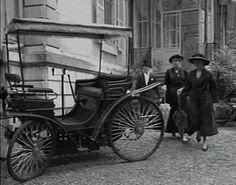 |
| 1893 Peugeot 3CV |
JFR / ERB-APA #14
Let us turn to Chap. XXVII of Tarzan Of The Apes. Here we read, "A taxicab drew up before an old-fashioned residence," and the passenger dismissed the 'chauffeur'. I doubt very much if even the most enterprising of Baltimore citizens would be running a taxi service with an 1873 vehicle, or if any sane person would hire one.
Taxis were virtually unknown until after the turn of the century. The taximeter cab came into use in 1898 but taxicabs didn't really prevail until 1907.
JMM / ERB-APA #17
Again quoting from History Of Cars, The Encyclopedia Of The Motorcar. By 1803 a Cornish mining engineer, Richard Trevithick, had a steam road coach, capable of carrying eight passengers and running at twelve miles per hour. By 1836 Walter Hancock ran a regular service in London between Paddington and the city at a claimed twenty-one miles per hour. During the same period, Sir George Dance was operating between Gloucester and Cheltenham, carrying three thousand passengers in four months. His coaches weighed one point five tons and could do as much as ten miles per hour.
If it could be done in 1836, why not in 1893? Do not take me wrong, however. I am not implying that the taxicab mentioned in Tarzan Of The Apes is a motorcar, nor does Burroughs. I only wanted to point out that it is not as outlandish as John seems to think. Actually, it was an everyday habit for the people of these times to call horse carriages for hire 'taxis', and their drivers, 'cab drivers'. For an excellent example of this see Author Conon Doyle's, The Hound Of The Baskervilles. This story takes place in October 1889 and the mystery John Clayton's horse-drawn carriage is referred to both as "taxi" and "cab", and himself as "taxi driver" and "cabman".
 |
| The Hound Of The Baskervilles |
JFR / ERB-APA #14
Toward the end of Tarzan Of The Apes, we find Cecil Clayton driving a "huge touring car" which "quickly whirled away through the dense northern woods toward the little farm...". I still find it difficult to visualize" a huge touring car" with bicycle-like wheels and a tiller. And how could it 'whirl' through the mud roads and wood trails of 1893 rural Wisconsin? Then we have Canler with his "purring six-cylinder.".Six cylinders in 1893?
 |
| Early Oldsmobile with a curved dash. |
JMM / ERB-APA #17
Most of the above-mentioned descriptions are twisted to suit John's personal opinions, and no rock-hard proof one way or another. For example, The World Book Encyclopedia says, "By 1830, English steam carriages carried up to fourteen passengers each. But many people objected to the snorting monsters, which frightened horses and children and ruined roads." Seems to me if you got huge in 1830 you can have huge in 1893.
 |
| Artist Unknown |
Another good example of why one should be leery about broad descriptions is, what size is the mentioned "little farm?" Naturally, it all depends on who is doing the describing. If a city person who is used to one-acre lots described the farm it might be a 'big ten-acre farm'. If a Texan rancher who is used to lots of acreages described the same ten-acre farm it might be, "a little farm." The same goes for the above car descriptions. These are broad descriptions and not factual statements within themselves.
As for quickness, I have already shown that Walter Hancock had a steam road coach capable of twenty-one miles per hour in 1836. Why would it be impossible in 1893?
Now we come to what I feel is John's first real undebatable fact. Canler's "purring six-cylinder." The first car with a 'six-cylinder', according to History Of Cars, The Encyclopedia Of The Motorcar, was a Napier. They were produced in London and Boston from 1906 through 1909.
 |
| 1908 Naiper |
JFR / ERB-APA #15
The Encyclopedia Americana tells us that, in 1902 the Locomobile became the first car to display a four-cycle, water-cooled, front-mounted engine. Also "The trend toward large cars came out in 1903. In 1905 French cars came out with side doors. This being the case - how was it that a closed taxicab was used in the kidnapping of the Greystoke baby in the mid-1990s?
 |
| 1904 Damlier Mfg. Company |
JMM / ERB-APA #17
This is another good undebatable fact that the master researcher brings to our attention. In The Beasts Of Tarzan, chapter one, Burroughs mentions automobiles twice.
 |
| The Beasts Of Tarzan |
- "As Tarzan leaped from the roadster that had met him at the station and ran up the steps to his London town house he was met at the door by a dry-eyed but almost frantic woman." ERB-The Beasts Of Tarzan.
- The next automobile is the well-described taxi that John refers to... "The baby's nurse had been wheeling him in the sunshine on the walk before the house when a closed taxicab drew up at the corner of the street. The woman had paid but passing attention to the vehicle, merely noting that it discharged no passenger, but stood at the curb with motor running as though waiting for a fare from the residence before which it had stopped." ERB-The Beasts Of Tarzan.
- "Just before she reached the vehicle, Carl leaped in beside his confederate, slamming the door to behind him. At the same time the chauffeur attempted to start the machine, but was evident that something had gone wrong, as though the gears refused to mesh and the delay caused by this, while he pushed the lever into reverse and backed the car a few inches before again attempting to go ahead gave the nurse time to reach the side of the taxicab.
Leaping to the running board, she had attempted to snatch the baby from the arms of the stranger, and here, screaming and fighting, she had clung to her position even after the taxicab had got underway; nor was it until the machine had passed the Greystoke residence at good speed that Carl, with a heavy blow to her face, had succeeded in
knocking her to the pavement." ERB-The Beasts Of Tarzan.
 |
| 1904 Briscoe-Maxwell |
It is quite obvious that the taxi described in The Beasts Of Tarzan is not an 1896 vehicle. As mentioned in my opening comments, I believe this is a purposeful sixteen-year modernization deployed by Edgar Rice Burroughs, the author, to protect the Greystokes. The taxi in an 1872 chronology would naturally be a horse-drawn carriage.
 |
| 1984 London Taxi Horse Drawn |
JFR / ERB-APA #15
In Chap. 3 of The Return Of Tarzan the Apeman sees Olga de Coude approaching in a limousine. It is my understanding that the word "limousine' did not come into being until 1902. It was a newly-coined French word meaning 'of Limogues.'
JFR / ERB-APA #15
Going back to Tarzan Of The Apes. "A great black car came careening down the road," It was a French car driven by Tarzan. Later, the car "was plunging along the uneven road at a reckless pace." At 20 mph? I question if there were roads in rural Wisconsin, in 1893, capable of accommodating motor cars with any degree of consistency. Three motor vehicles in this unnamed hamlet at the same time would be - as Jane's father would say - most remarkable. I feel there are two questions to be answered.
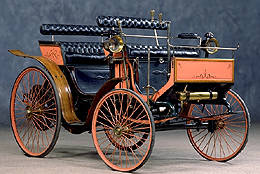 |
| 1893 Peugeot Type 8 |
- How did the three cars get to Wisconsin?
- Why would anyone bring them there in the first place?
 |
| 1893 Benz Viktoria |
Certainly one couldn't drive the thousand or so miles from Baltimore, laden down with luggage, tins of fuel, spare parts, etc. Did they go up 'piggy-back' by train? Was this done in the 1890s? I suggest that any travelers going from Baltimore to a summer place in Wisconsin in 1893 would go by train and then rent a horse and buggy from the local livery stable to complete their journey.
 |
| 1893 Peugeot Type 5 |
Jane's farm was some distance from a hamlet, which was some distance from a town that apparently had frequent train service. Canler wanted to take the midnight train, Clayton suggested the first train - which apparently left in the evening. One must assume arrangements had been rather quickly to have the cars shipped out as well. And yet, in Chap. XII of The Return Of Tarzan, Jane says "At the last moment he (Tarzan) determined to drive his machine back to New York." This would imply that he drove to the farm, from Baltimore. Here is a man who has just learned to drive, in France, trying to travel a thousand miles alone, in a strange country. (Personally, I wonder if he could have done it in 1911.)
JMM / ERB-APA #17
John's presentation paints a pretty bleak picture of the early motorists. It almost makes you wonder how cars got a foothold. I am sure that early car transportation was often hectic, but my research indicates it was by no means impossible. Again from History Of Cars, The Encyclopedia Of The Motorcar; As early as 1878 there had been a steam wagon race in the U.S. covering two hundred one miles from Green Bay to Madison, Wisconsin. An Oshkosh won the race.
Americans depended on their railways for long-distance travel. Outside the towns and cities, paved roads were rare. The early motorists had to struggle through dust and sand in the summer, floods, and axle-deep mud in the winter. Cars were built with the standard 4-ft 8-in track to fit the ruts created by farm wagons. To get about at all was a challenge - and the Americans became good at it.
Between 1902 and 1907 an American named Charles J. Glidden drove fifty thousand miles in his British Napier, right across North America to Europe, Malaysia, Australia, New Zealand, Burma, China, and Japan. In 1903 H. Nelson Jackson drove a two-cylinder Winton across North America in sixty-three days.
There is no doubt in my mind that if these guys can produce all that mileage ten years later, Tarzan could have produced his in 1893. I find it amusing that John finds automobile travel for Tarzan in 1893 so improbable. To me, I find accepting Tarzan to master French and English in one year much more improbable than driving a car over a long distance. That is not to mention the wild man learning the ways of civilization enough to fit into society unsupervised.
Although I do feel it was very much in Tarzan's capability in 1893 to drive an automobile the described distance, I doubt if it was done. Tarzan was in a hurry to get to Jane, so in my opinion, the car was piggy-backed by train whenever possible as John suggested.
By the way John. Edgar Rice Burroughs, the author, in no way, implies how long Tarzan's motor escapades last, so how do you know his travels were done all at one time? My research indicates Tarzan was in America for at least a year and a half. ERB, the author, reports very little about Tarzan's American journey, especially this much time. Is it possible Tarzan's auto travels lasted much longer than the author, implicated? See my article Tarzan's 1893-94 U.S. Visit Timeline for more info.
"Why would anyone bring them there in the first place?' It has long been a theory of mine that Paul D'Arnot was involved (his money mostly) offstage with early French automobile manufacturing. He would not be the first French military officer to do so. Nicolas Joseph Cugnot built one of the first full-size, self-powered road vehicles in 1769. Most likely D'Arnot was associated with Panhard et Levassor or Armand Peugeot. Since Tarzan was going to America with or without Paul's help the Frenchman decided to help his friend as much as he could. D'Arnot got Tarzan a motorcar advertising job. The ape-man was in charge of taking French cars to America for the Columbia Exhibition of 1893 held in Chicago, Illinois. Naturally, Tarzan's romping around northern America was for advertising purposes, but at the same time, he was able to take care of his personal affairs.
 |
| 1769 Nicolas Joseph Cugnot |
JFR / ERB-APA #15
In The Return Of Tarzan, we have Countess de Coude saying, "I was but recalling with
admiration those stupendous skyscrapers, as they call them, of New York." Again referring to the Encyclopedia Americana, we are told, "the city (New York) at the beginning of the (20th) century appeared horizontal but it now began to acquire its famous vertical look." Thus - no stupendous "skyscrapers" in the mid-1890s.
 |
| 1890 New York City |
JMM / ERB-APA #17
This is another undebatable fact that John points out. William La Baron Jenny designed Chicago's first skyscraper, the Home Insurance Building. It was built with an iron frame in 1884 and torn down in 1931. The oldest skyscraper in New York City is the twenty-one-story Flatiron Building on 23rd Street where Broadway crosses Fifth Avenue. Completed in 1902. It is built in the shape of a triangle.
 |
| 1903 Flatiron Building |
JFR / ERB-APA #15
I find it very difficult to dismiss the date of Jane's letter to Hazel Strong. To err by 16 or 17 years, particularly when two different centuries are involved, is hard to explain.
 |
| 1893 New York City |
JMM / ERB-APA #17
There is no accidental error in Jane's letter. When Edgar Rice Burroughs, the narrator, agreed to let Edgar Rice Burroughs, the author, pin Tarzan Of The Apes, The Return Of Tarzan, The Beasts Of Tarzan, Jungle Tales Of Tarzan, and Tarzan And The Jewels Of Opar it was agreed that Edgar Rice Burroughs, the author, would take steps to protect the true Greystoke's identity. Keeping his part of the bargain Edgar Rice Burroughs, the author, modernized the story by sixteen years, added obvious contradictions, added his true life experiences, etc... Thus, you have the false sailing date of 1888, the false 1908 date on Jane's letter, the modernized description of automobiles, and the purposeful mentioning of "skyscrapers", "limousine" and "chauffeur".
 |
| 1882 Mills Building, New York City |
If you will note, all of these are contradictions due to modernization. None have any actual
bearing on the stories themselves. Besides these minor discrepancies, Tarzan's 1872 birth date runs hand in hand with Burroughs' provided information. Using Tarzan Of The Apes provided 1888 date you can accept the modernization, but the eclipse in Jungle Tales Of Tarzan does not occur, Korak is not Tarzan's son, The Son Of Tarzan is pinned years before the events take place, and the list goes on and on. These are major alterations that change Burroughs' presented story greatly.
 |
| 1890 New York City |
ABOUT THE AUTHOR
James Michael Moody is a lifelong fan and collector of Edger Rice Burroughs. Over the past forty-five years, Moody has contributed over two hundred articles to various ERB-related fanzines. He also manages an unauthorized Tarzan blog titled Greystoke Chronologist: James Michael Moody. There, the researcher chronologies the Tarzan books starting in May 1872 (known as the pushback theory) instead of the more accepted date, May 1888.
James Michael Moody also authorizes the action-packed Sci-Fi fantasy adventure Unium series. Pioneers On Unium, published December 31, 2019, Exiled On Unium, published August 25, 2022, and Swordsman On Unium, published on July 15, 2024.




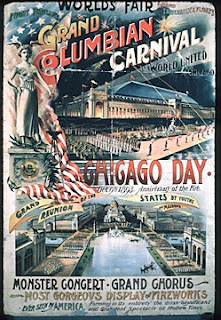
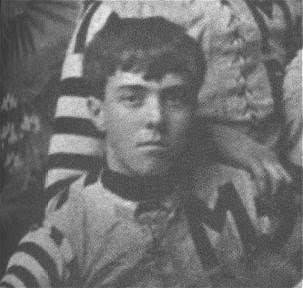
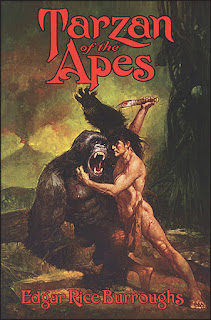


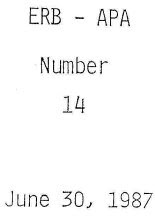



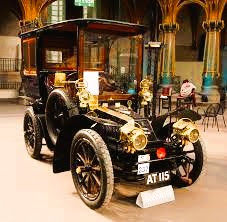
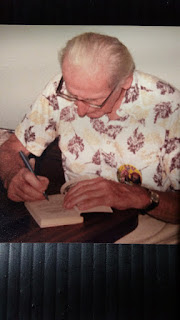


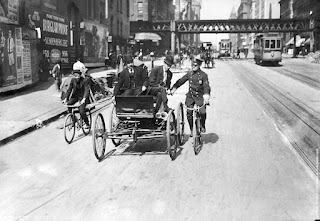

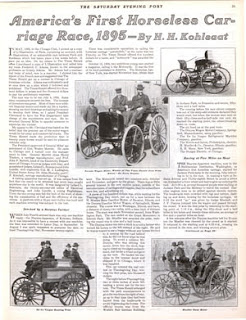

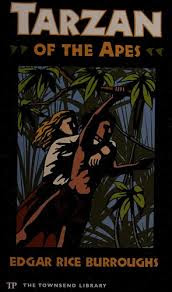
No comments:
Post a Comment